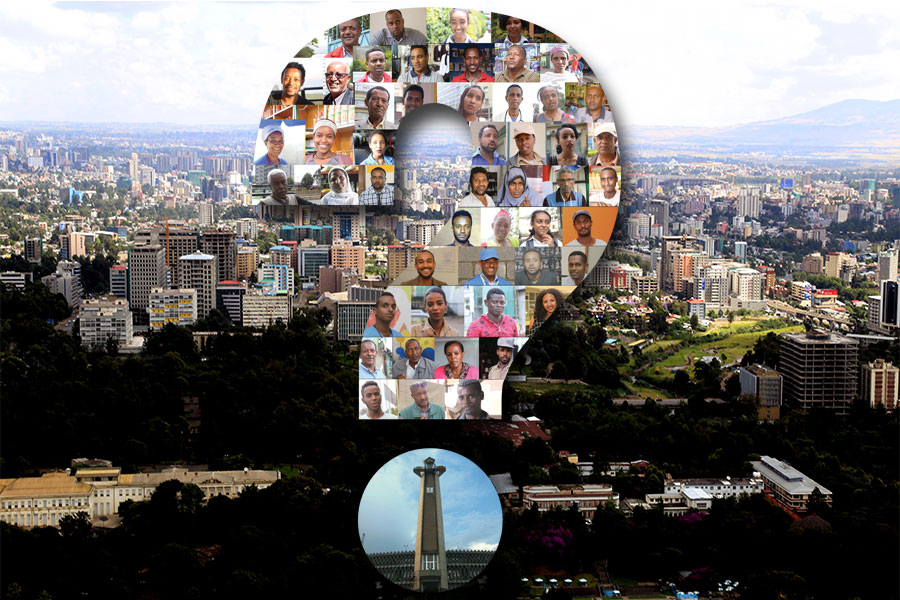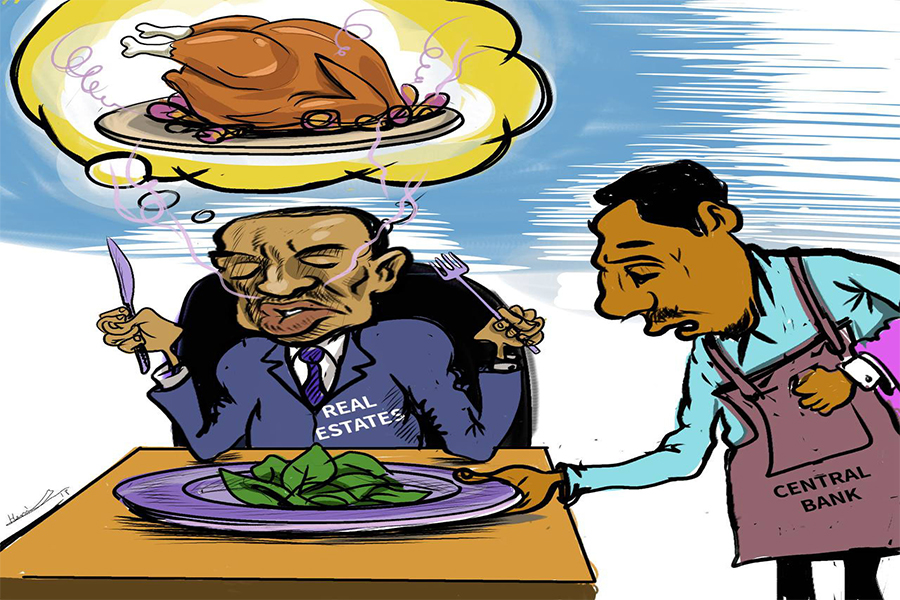
View From Arada | Jul 06,2019
Nov 16 , 2019
By Clay Webster
Studies show that the percentage of youth compared to the overall population is a significant predictor of nations’ homicide rates, writes Clay Webster, who studied energy and environmental policy at Johns Hopkins School of Advanced International Studies. He has written about energy, commodity and financial markets for The Motley Fool, Platts and US News & World Report.
Another week was marred by a disturbing case of violence. This time students at Woldia University were injured during a clash that followed a televised football match in which two students died and a dozen or so more were injured.
While many commentators were quick to pin the blame on ethnic politics and have since compared it with other similar violence that has occurred on campuses in other parts of the country, less has been said about what may seem an all too obvious observation: namely, the victims and the perpetrators were all young people.
The reason it is fairly easy to disregard the age of the participants, or their gender for that matter, is that violence is normally committed by young men to such an extent that we can often fail to view it under that guise.
The United Nations Office on Drugs & Crime (UNODC) notes that men perpetrate about 80pc of all homicides worldwide, a finding that is generally quite similar between even disparate nations. But more significant is the fact that homicides and other violent crime have an extreme bias toward the young.
In a fascinating new paper headlined “The Contribution of Age Structure to the International Homicide Decline,” authors Mateus Santos, Alexander Testa, Lauren Porter and James Lynch found that the percentage of youth compared to the overall population was a significant predictor of nations’ homicide rates.
In a telling paragraph, the researchers write, “In Canada, for example, persons between 15 and 29 years old … makeup 19.6pc of the population, but represent 54.8pc of all persons brought into formal contact with the criminal justice system for homicide, a concentration that is typical of other countries around the world.”
By using longitudinal data across a wide swath of countries, the researchers discovered that those with large shares of their population between the ages of 15 and 29 tended to have higher rates of homicide than the same countries had as their populations aged.
In fact, among nations with lower levels of homicide, the authors found a one percent decrease in the 15-29 demographic resulted in an average 4.6pc decline in the homicide rate.
Of course, Ethiopia does not fall under the low homicide category. But it may surprise many citizens that at 7.6 homicides per 100,000 in population, the currently beleaguered nation is neither in the high murder rate category. Just 25 years ago the United States had the same rate. What is more, when compared with other large population African countries, Ethiopia’s murder rate is 23pc below that of Nigeria, and South Africa’s is 4.5 times larger. The UNODC categorizes Ethiopia as a mid-level homicide country.
But in discussing the flurry of violence that enters the news headlines on a week-to-week basis, it is important to note how demographics heavily favour a rise in violence and other crime in this era. For what many Ethiopian leaders seek to dress up in public relations terminology as the “demographic dividend” might just as easily be called the “demographic curse.”
Based on 2018 estimates by the CIA World Factbook, Ethiopians between the ages of 15-29 represent approximately 24pc of the country. This is higher than most developed nations but not in an extreme sense. However, 43pc of the country was estimated to be less than 15 years of age last year.
This means that each year that goes by over the next decade the proportion of the population between 15 and 29 in Ethiopia will likely rise by a considerable degree.
Mateus Santos et al are quick to point out that the relationship between the youth bulge and the homicide rate is much stronger among nations with lower rates to begin with. But even compared with other African nations, the UNODC’s Global Study on Homicide 2019 report finds that human and economic development indicators only explain 34pc of the difference in rates of homicide. It concludes that “the comparatively larger youth population in countries in Africa … is significantly linked to comparatively higher homicide rates.”
So why are larger percentages of youth in a population more likely to lead to increased violence?
Here the social scientists mentioned are mum. But the World Health Organization (WHO) states in a fact sheet released on the topic that cognitive development is a large factor. Simply put, young people are more impulsive and less able to non-violently control their behaviour. These factors are then exacerbated among youth with lower levels of educational attainment.
Another possibility is that with a youth bulge also comes a lower percentage of older adults who can adequately use their power in numbers to control the malbehavior of youngsters. In a sense, there may be fewer influential role models to assume authority in many social situations.
But the WHO also provides several policies that may ameliorate what might become a dystopian future. Unsurprisingly, education is at the top of the list. Vocational training is given a nod. Counselling and mediation have also been known to prevent communal violence. And WHO also points to community policing as a way of placing well-known adults in harm’s way to quickly reduce tensions when tempers flare.
But the evidence is overwhelming that a large growth in the youth population is a dangerous factor for any society. And Ethiopia will be dealing with that dividend for a long time to come.
PUBLISHED ON
Nov 16,2019 [ VOL
20 , NO
1020]


View From Arada | Jul 06,2019

Editorial | Jun 17,2020

Covid-19 | May 16,2020

Commentaries | Aug 26,2023

Commentaries | Sep 21, 2024

Verbatim | Mar 01,2024

Commentaries | Sep 20,2025

Featured | May 24,2025

Radar | Sep 18,2021

Radar | Jan 29,2022

Photo Gallery | 173864 Views | May 06,2019

Photo Gallery | 164090 Views | Apr 26,2019

Photo Gallery | 154165 Views | Oct 06,2021

My Opinion | 136587 Views | Aug 14,2021
Editorial | Oct 11,2025

Dec 22 , 2024 . By TIZITA SHEWAFERAW
Charged with transforming colossal state-owned enterprises into modern and competitiv...

Aug 18 , 2024 . By AKSAH ITALO
Although predictable Yonas Zerihun's job in the ride-hailing service is not immune to...

Jul 28 , 2024 . By TIZITA SHEWAFERAW
Unhabitual, perhaps too many, Samuel Gebreyohannes, 38, used to occasionally enjoy a couple of beers at breakfast. However, he recently swit...

Jul 13 , 2024 . By AKSAH ITALO
Investors who rely on tractors, trucks, and field vehicles for commuting, transporting commodities, and f...

Oct 11 , 2025
Ladislas Farago, a roving Associated Press (AP) correspondent, arrived in Ethiopia in...

Oct 4 , 2025
Eyob Tekalegn (PhD) had been in the Governor's chair for only weeks when, on Septembe...

Sep 27 , 2025
Four years into an experiment with “shock therapy” in education, the national moo...

Sep 20 , 2025
Getachew Reda's return to the national stage was always going to stir attention. Once...

Oct 12 , 2025
Tomato prices in Addis Abeba have surged to unprecedented levels, with retail stands charging between 85 Br and 140 Br a kilo, nearly triple...

Oct 12 , 2025 . By BEZAWIT HULUAGER
A sweeping change in the vehicle licensing system has tilted the scales in favour of electric vehicle (EV...

Oct 12 , 2025 . By NAHOM AYELE
A simmering dispute between the legal profession and the federal government is nearing a breaking point,...

Oct 12 , 2025 . By NAHOM AYELE
A violent storm that ripped through the flower belt of Bishoftu (Debreziet), 45Km east of the capital, in...